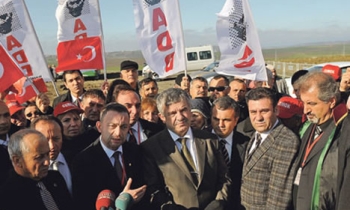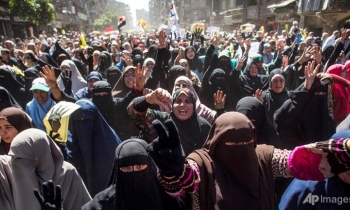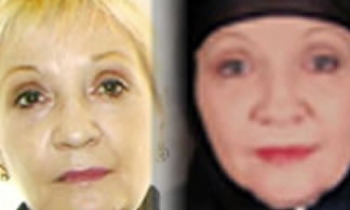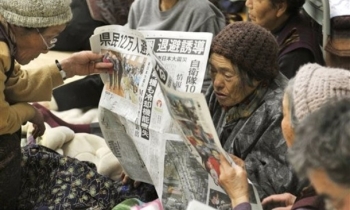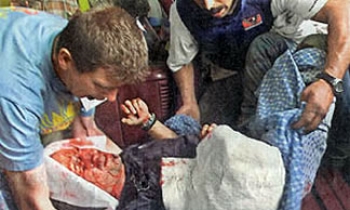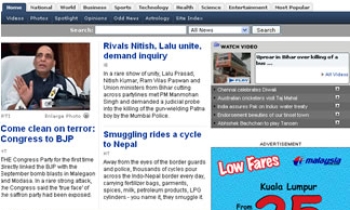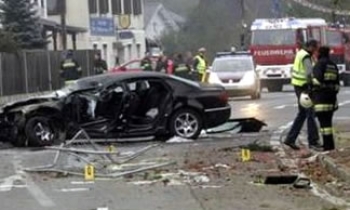The US media's reporting of the war in Iraq fell sharply in the second quarter of 2007, largely due to a drop in coverage of the Washington-based policy debate, a study released Monday said. Taken together, the war's three major story lines — the US policy debate, events in Iraq and their impact on the US homefront — slipped roughly a third, to 15 per cent of an index of total news coverage, down from 22 per cent in the first three months of the year.

The study, conducted by the Project for Excellence in Journalism (PEJ), examined 18,010 stories that appeared between April 1 and June 29. Its News Coverage Index (NCI) encompasses 48 outlets, including newspapers, radio, online, cable and network television. The project is a research group studying and evaluating press performance. The Project for Excellence in Journalism describes itself as nonpartisan, nonideological and nonpolitical. The index is designed as an audit of a broad cross-section of the US news media.
In the derby for “free media” exposure, Barack Obama overtook fellow Democrat Hillary Clinton, who led in the first three months of the year. Among Republicans, the race for media attention was a tight contest among John McCain, Rudy Giuliani and Mitt Romney.
Another major change was that press coverage of the war in Iraq declined markedly. That decrease resulted largely from a decline in coverage of the Washington-based policy debate, which fell 42 per cent from the first to second quarter, once the Democrats failed to impose timetables in legislation funding of the war.
Among the findings in the second quarterly report of PEJ:
- After Democrats received more than twice the coverage of Republicans in the first quarter of the year (61 per cent to 24 per cent), coverage evened out in the second quarter. Democrats received 42 per cent of the coverage versus 41 per cent for Republicans. That Republican gain came largely from a one month surge in May.
- Attention to the Iraq war fell across all five media sectors in the second quarter. The bulk of the decline occurred after May 24, when Congress approved funding without including troop withdrawal timetables, a move widely viewed as a White House victory. In all, the policy debate filled 7 per cent of the space or airtime in the quarter, down from 12 per cent in the three months of the year.
- There continue to be clear differences in the news judgments of different cable channels. As in the first quarter, the Fox News Channel devoted roughly half as much coverage to the war (8 per cent) than its rivals, CNN (18 per cent) and MSNBC (15 per cent). On the subject of the presidential campaign, MSNBC stood out, providing more than twice the percent of airtime of either competitor.
- When it came to party breakdown of the campaign coverage, the cable distinctions were found not across networks but across programs. On CNN, for instance, Paula Zahn focused more on Democrats, while Anderson Cooper spent more time on Republicans. On the Fox News Channel, Bill O’Reilly and Shepard Smith focused most on Democrats, while Hannity & Colmes and Brit Hume were more evenly divided between the two parties.
- The Virginia Tech campus massacre that claimed 33 lives was the biggest story for any given week so far this year. It accounted for 51 per cent of all coverage April 15-20. But the media’s attention to the story was fleeting: by the end of April, coverage had virtually disappeared. The policy debate in Iraq was the second most covered event of the year so far the week the president announced the “surge.” Don Imus’ firing was the third most heavily covered story of the year in any given week.
- Paris Hilton is no Anna Nicole Smith. Or perhaps a short stay in the slammer is no match for a mysterious death that leaves behind their heir to a fortune with uncertain parentage. In any case, the socialite’s jailhouse drama in the end attracted much less media attention than the playmate-turned-reality TV star’s death. Smith’s demise was a long-running saga that came in the eighth-biggest story of the first quarter. Hilton’s June jailing proved to be a mostly one-week story that failed to make the top-10 story list this quarter.


The Project’s News Coverage Index is designed to provide news consumers, journalists, and researchers with hard data about what stories and topics the media are covering, the trajectories of major stories and differences among news platforms.
The second quarterly report of the PEJ News Coverage Index includes an examination of 18,010 stories that appeared between April 1, 2007 and June 29, 2007. The Index encompasses 13 newspapers, eight radio outlets (a mix of talk, public radio, and headline feeds), five of the top online sites, several hours a day of all three cable news channels and both network morning and evening newscast. The data for the year to date includes 35,426 stories.


